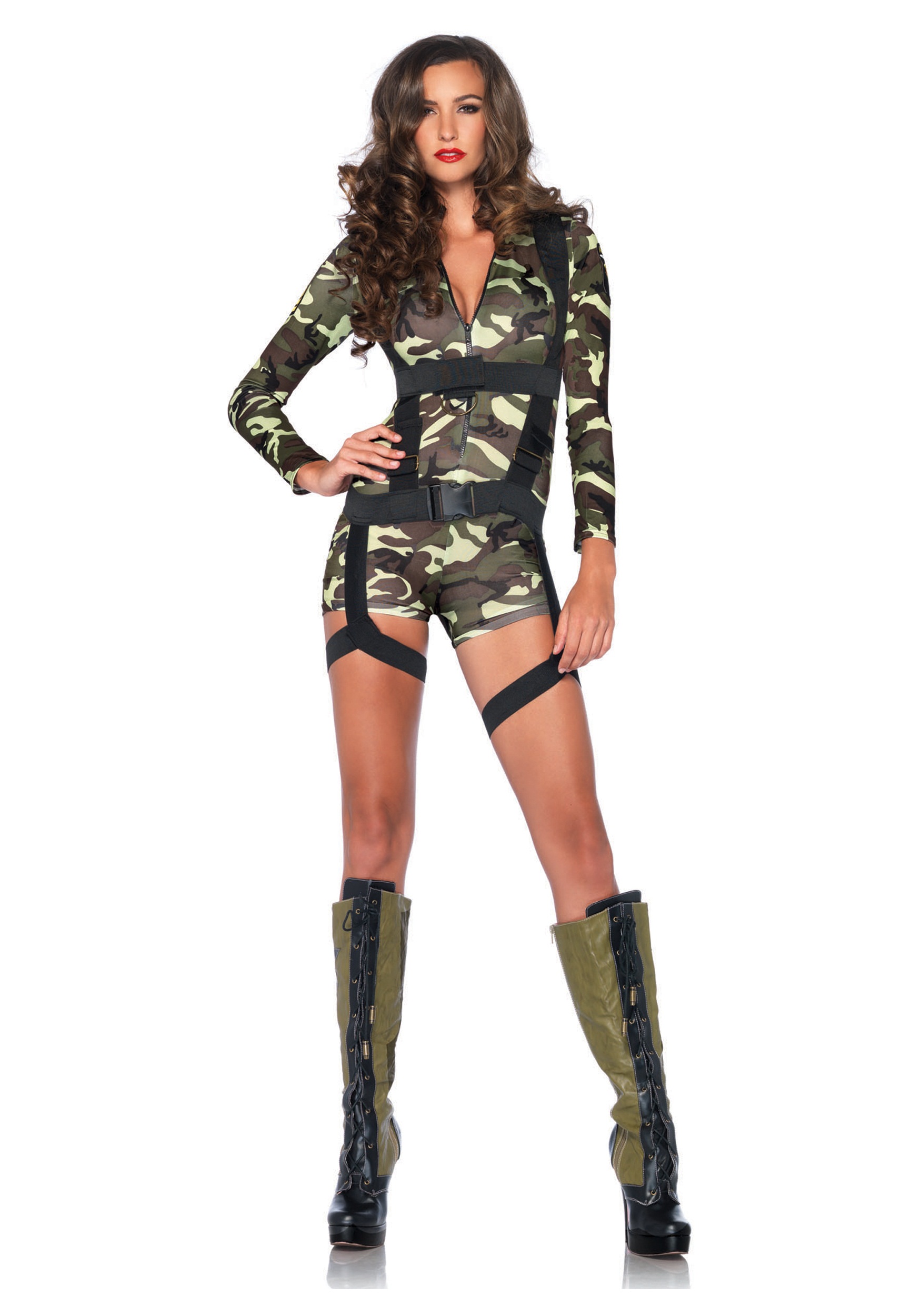Military Makeup - In recent years, innovations in the cosmetic industry have sought to develop better quality products for the military due to the tendency of military products to damage the skin.
Less than five years ago, regional development was considered unlikely to reach a high point, but Asian shopping trends now show the opposite.
Military Makeup

Camouflage cosmetics that claim to protect the skin and allow it to breathe are especially popular with South Korean soldiers.
Skincare & Makeup Discounts & Coupons
In Seoul, international beauty brand The Face Shop has launched a range of 'For soldier' makeup products with botanical ingredients and UV protection.
Launched in 2011, the compact car is available in green, brown and black and sells an average of 6,000 per month nationwide, according to company representatives.
In a 2012 study, researchers at the University of Southern Mississippi, led by polymer chemist Robert Lochhead, set out to develop a face product to protect soldiers' faces from explosive heat.
The goal is to create a product that has waterproof, non-irritating cosmetic properties, including pesticides, and protects the skin for up to 15 seconds before its temperature reaches 60 ° C (140 ° F).
Simulated Guts Yield Glory At Maple Resolve 17
Lochhead and his team have replaced traditional combustible ingredients such as hydrocarbons, fats and mineral oils with heat-resistant alternatives called silicon.
They also used a special chemical technique to assemble each pigment particle into large lumps, and this helped the cosmetics to reflect the heat of the explosion.
But instead of adding it as a liquid, they pack the anesthetic in small pellets made of a gel-like material. The gel also contains water, which helps prevent burns.

Tests have shown that the new makeup can protect a soldier's face and hands for up to 15 seconds before the soldier's own temperature rises to 60 ° C (140 ° F), where mild burns can occur.
Army Costume For Kids Boys Girls Soldier Military Halloween Costumes For Boys Available In Sizes S M L Xl
Retinol is widely considered in the cosmetic industry as a golden ingredient for permanently nourished skin. However, due to the wide variety, it tends to lose its energy rapidly ...
Deodorants are an important part of daily human hygiene. While the habit itself is second nature, the ingredients in the deodorant are widely discussed.
Consumers are buying more and more natural beauty and health care products, which is evidenced by the increasing sales of products with natural claims ...
Water scarcity and water pollution remain environmental concerns. Every year, about 130 tons of microplastic particles come from personal care ... Wearing a dark blue shirt and red pants, this French soldier cut his teeth on the battlefield at the turn of the 20th century. It is a uniform that the French people are especially proud of. But the bright colors of the green plants and the dark brown of the war, and the new weapons, especially the longer-range guns, made the soldiers Easy to set goals.
Youtube Makeup Star Missy Lynn On Being Feminine And Tough
After visiting the Balkans in 1912, French Minister of War Adolphe Messimy observed how Bulgarian army uniforms blended into the jungle. On his return, he advocated the use of dark colored uniforms for the French army. He wanted the soldiers to wear brown or light green. But many in France objected, writing editorials in support of their patriotic blue and red uniforms. In the history of World War I 1962 by Barbara W. Tuchman.
"Get rid of" all colors, all things that give soldiers a lively look that goes against the taste and function of the French military. " An army secretary said more directly: "Give up the red pants or not!
But Messimi, who struggled with changing aspects of the war, had little patience for those who were overly patriotic. From the life of a soldier: "Blind and ignorant hatred of the most visible colors leads to cruelty." That's right.

Two years later, during a border battle on the western front in the dense forests and mountains where Belgium, Luxembourg, Germany, and France met, soldiers were shot by machine guns in red pants and white gloves. The French army was particularly interested against the background of greenery. Nearly 27,000 soldiers were killed on August 22, 1914, the deadliest day in French history. The French changed their minds about red and blue icons, and the army changed their uniforms.
Army Outfit Kostuum Dames
Cheating is not always necessary: when a gun can only fire at close range or a soldier fights with a sword instead of a gun, there is no way to hide. If you are close to someone, you are close enough to see them. Bold patriotic uniforms help identify friends from enemies. During the Revolutionary War, British soldiers wore bright red uniforms and were easy targets for colonial shooters. During the Battle of Lexington and Concord in 1775, the ragtag militia of the rebel colonies wore inconsistent matte colored clothing, enabling them to hide in bushes and turn on the lights on British walks on the streets. But those rifles can only fire if they fire fast again, about three rounds per minute. By 1914, machine guns could fire at almost 500 rounds per minute.
To learn how to fit in, the French military turned to an unexpected group of people who knew best how to deceive the eye with color and texture, and that France had a rich resource: artists. Is called
These artists then became part of special forces that provided fraudulent services to Allied forces during the First World War. The impostor will join the soldiers in the trench by drawing a fake pattern directly on the weapon or by drawing a destructive pattern on the canvas cover: dark brown and green dots or bold stripes that make it difficult to see. Where the edge of the weapon begins and ends. . Sometimes devotion to the art is dangerous, and in one instance, an artist is shot in the hand while leaving the trench to put an end to an imitation pattern.
The hypocrite also gave the army a color chart showing the soil in different shades according to the region and season. Tim Newark's 2007 book "Camouflage" shows a color chart that looks like an Impressionist painting with golden colors like autumn sunlight on the leaves or shades of white and brown seemingly looking at the leaves.
Russian Female Soldiers Compete In Annual 'camo For Makeup' Event (photos)
Other techniques look more like animals than plants. A particularly attractive maneuvering technique used during World War I to mimic a zebra or tiger stripe: Allied ships used "amazing" disguises to disguise the ship's appearance on the water and make eye contact. Confusion with white, black, gray, blue and blue straps. Reflect the clouds and the way the sky meets the ocean.
During World War II, airplanes and aerial photography became the mainstay of the war. Soldiers would look at the incoming planes, and this simple act would become a complicated affair: the sun would reflect the oil from their skin and brighten their faces. They need a way to hide from the enemy above. For a cheap restoration, British artist and teacher of imitation Roland Penrose wrote in his 1941 book.
Soldiers can use baking powder to make powders that stick to the skin. Soldiers also have access to green blanks, a substance found in soap cakes used for cleaning and polishing equipment. For anyone standing in the countryside, cow dung will do the trick, Penrose wrote, "although it is not good, it is highly recommended because it retains its color and texture well when dry."

If a soldier does not want to rub shit on his skin, he can also use ordinary charcoal or old mud, which can really protect the eyes from facial expressions. "Vision is the first sense of your orientation," says Admiral Patrick Lipton, a teacher at the Leadership School for Initial Military Training. "Most of you use sight to locate yourself in the atmosphere and then to locate your relationship with the enemy. Hesitation - this can save a soldier's life.
Colombian Soldiers Clown Around In Roving Circus
British house guards painted green and disguised during training in 1942. Photo by Harry Todd / Fox / Getty Images
During World War II, every American soldier learned basic cheating techniques using leaves or other materials to integrate into the environment. When applying face cream, it is best to apply a darker color to the high point of the face (where light will normally touch) and a lighter color to the shaded areas. (It's a bit different from the current trend of makeup that aims to make the skin look invisible) This spoils the face, mixes with the environment and hopes to make it less recognizable.
I asked Lt. Gen. Michael Fletcher of the Leadership School for Early Military Training about the best techniques for cheating programs. He says they instruct participants to cover high spots - including cheeks, forehead, around the mouth and jaw - with dark green. Central place













